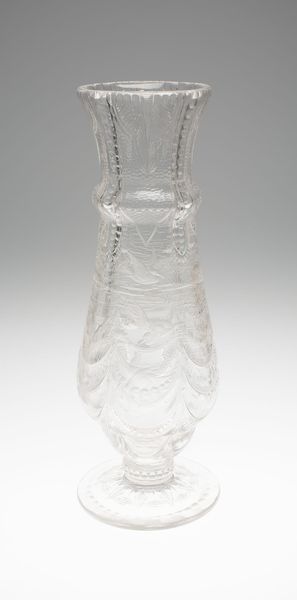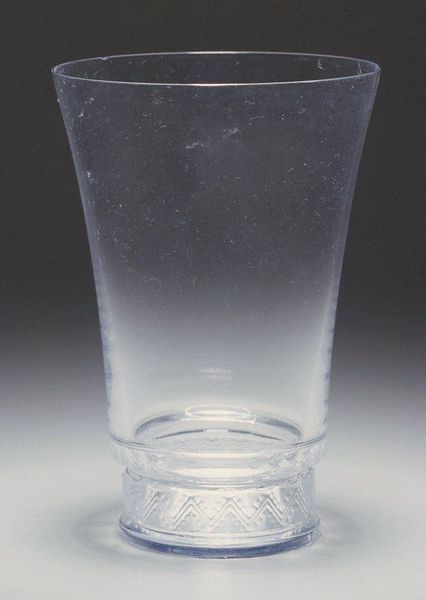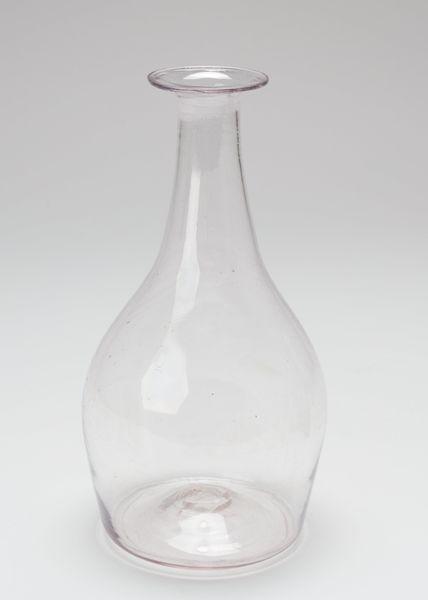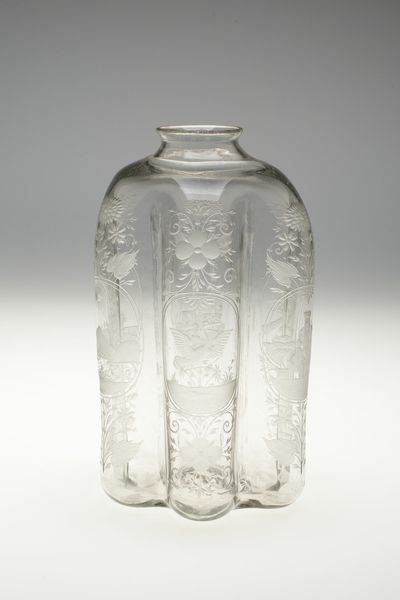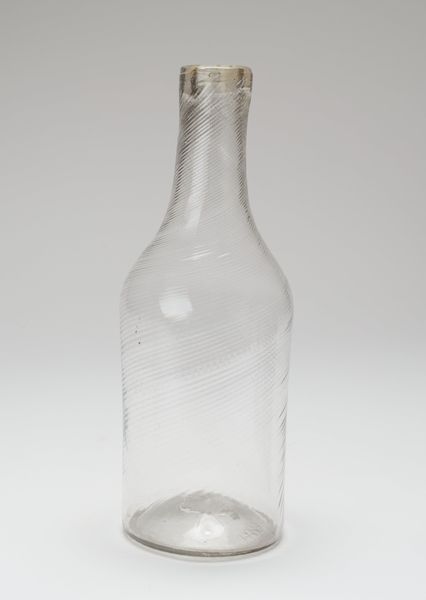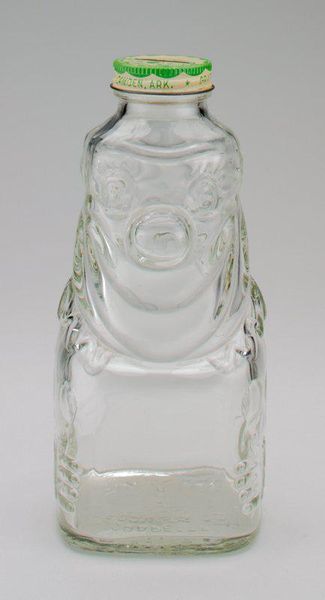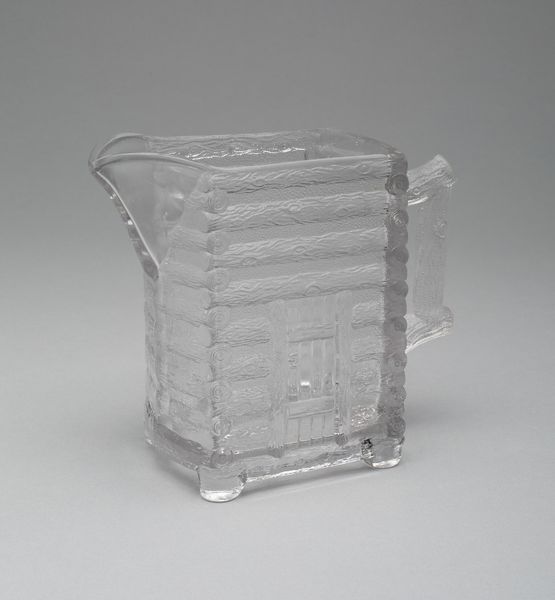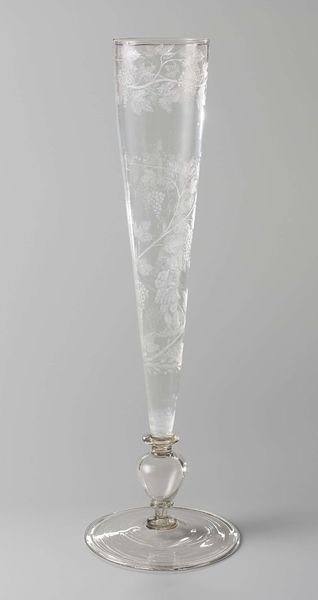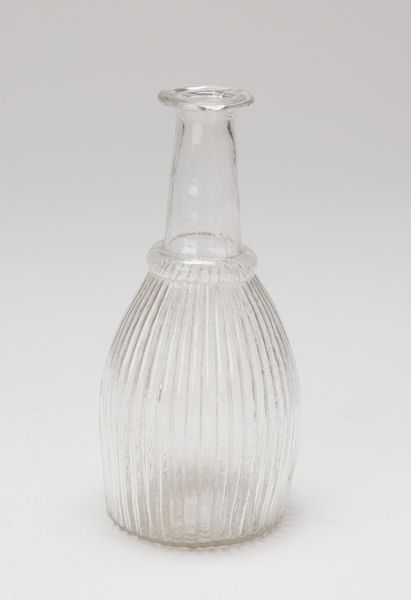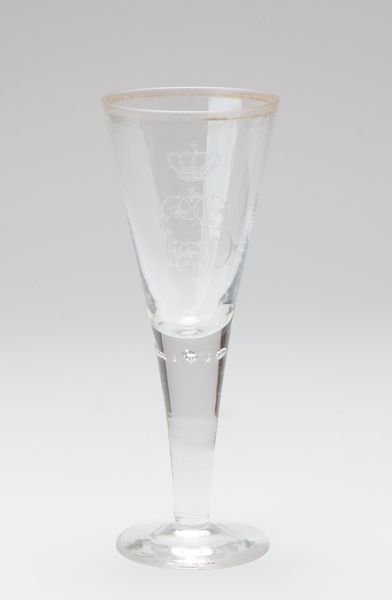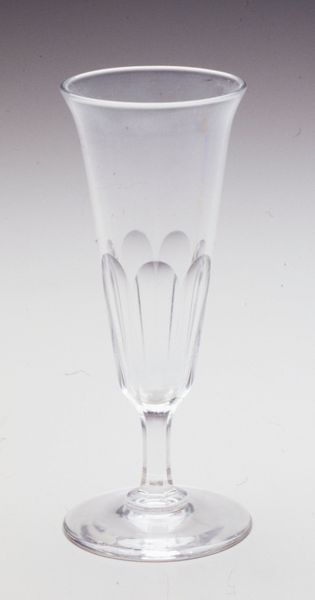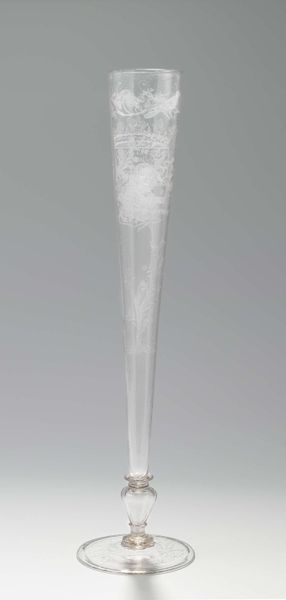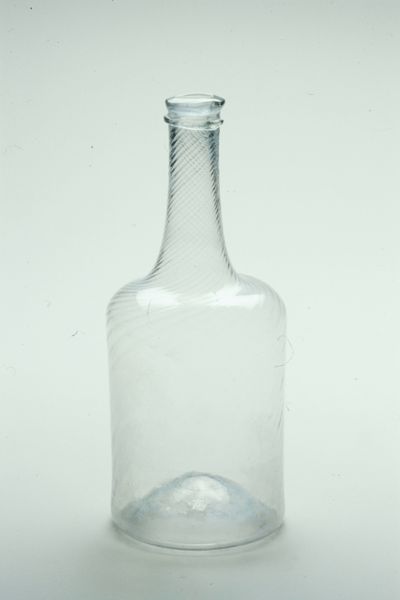
ceramic, glass, sculpture
#
art-nouveau
#
ceramic
#
glass
#
sculpture
#
ceramic
#
decorative-art
Dimensions: 8 x 5 1/8 x 4 1/2 in. (20.32 x 13.02 x 11.43 cm)
Copyright: No Copyright - United States
Curator: This "Pitcher," crafted around 1905 by Koloman Moser, resides here at the Minneapolis Institute of Art. Its materials include ceramic and glass, making it a fascinating object within decorative arts. Editor: My immediate impression is of solidified light, a block of ice somehow shaped into something so...utilitarian. The rough texture plays beautifully with the light. Curator: Indeed. Moser, a pivotal figure in the Wiener Werkstätte, championed an integrated approach to art, connecting it to daily life. A simple glass pitcher, then, embodies the workshop's aim to revolutionize everyday aesthetics, making functional items into artworks for everyone, irrespective of class. Editor: Considering this aim, can we read the material itself as part of the statement? The transparency and fragility suggest a delicate relationship to consumer culture, doesn't it? The Art Nouveau era was full of anxiety. Curator: Absolutely. Art Nouveau objects were meant to signify a move away from mass-produced items and back to more handmade, high-quality goods. Moser was very influential in integrating geometric forms that marked an effort toward modernist designs, even as they kept a decorative touch that's apparent in this piece, in this period there were significant discourses around gendered labor and the feminization of design. Editor: It is captivating how Moser blends this clear, almost severe geometry with organic fluidity in this piece. The interplay transforms a conventional form into something almost...crystalline, defying the expected weightiness of glass. Curator: Its existence challenges the accepted roles of design, class and labour. This "Pitcher," isn’t merely a vessel. It represents a moment when artistry aspired to democratize design by bridging societal divides through creativity and craftsmanship. Editor: In this object, art isn't elevated or disconnected; it is fundamentally intertwined with lived experience and with society’s ambitions. The very clear aesthetics that it presents make us think. Curator: Seeing design history as intrinsic to questions of gender, labour, and class reminds us that a “simple” object carries immense cultural weight. It offers fresh points to intervene into traditional understandings of the time.
Comments
minneapolisinstituteofart almost 2 years ago
⋮
A founder of the Wiener Werkstätte (Vienna Workshops) with Josef Hoffmann in 1903, Koloman Moser began his career as a painter working with the Vienna Secession artists in the Viennese Art Nouveau style of the 1890s. His early Secession designs are characterized by naturalistic motifs on a grid-pattern. His later work for the Wiener Werkstätte included graphic design, metalwork, ceramics, leatherwork and glass and incorporated more abstract and geometric decoration, also using a grid pattern. In this pitcher Moser has removed all decoration and employed the crackle pattern of the glass as the sole ornament on the simple geometric form.
Join the conversation
Join millions of artists and users on Artera today and experience the ultimate creative platform.
